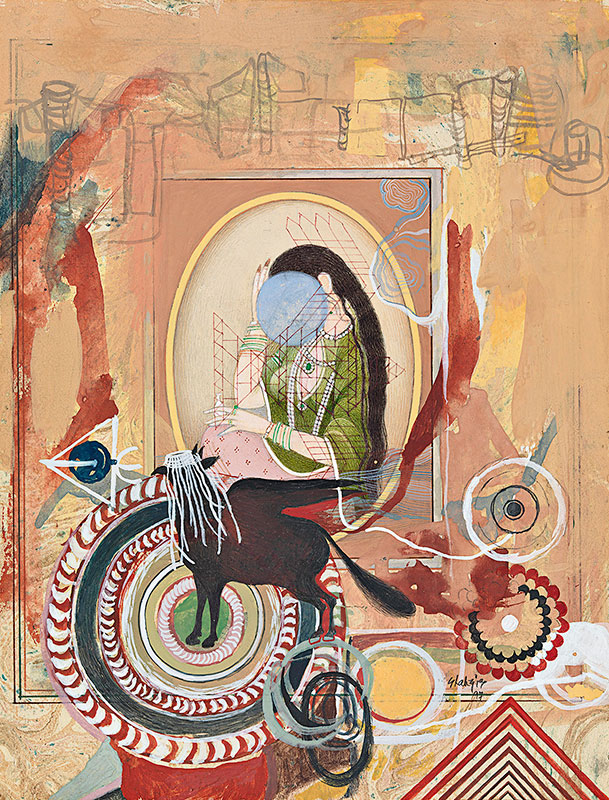Ready to Leave

Circles featured increasingly in Sikander’s lexicon in Houston, along with the griffin, an eagle-lion hybrid from Greek myth. “Under Alexander the Great, the Hellenic world extended to the Indian region of Punjab,” Sikander explains, “making the griffin a remnant from an earlier period of colonialization. I was connecting the griffin to the chalawa, a Punjabi term for a small farm animal that is now disappearing due to the region’s urbanization. The chalawa is a ghost. In my usage, it’s somebody who is so swift and transient, you can’t pin down who they are. I am identifying with the chalawa, resisting the routinely confronted categories: ‘Are you Muslim, Pakistani, artist, painter, Asian, Asian American, or what?’”
Shahzia Sikander (born 1969)
Ready to Leave, 1997
Watercolor, gouache, and ink, on tea-stained, marbled wasli paper
Whitney Museum of American Art, New York; Purchase, with funds from the Drawing Committee, 97.83.3
© Shahzia Sikander. Courtesy: the artist, Sean Kelly, New York and Pilar Corrias, London.
Shazia Sikandar: In the center of this painting, you see a female, but she's not showing her face. Alongside her is this hybrid Griffin, or what I call chalawa, a Punjabi term for a small, disappearing mythic farm animal. But here it functions as the poltergeist or the ghost, or even cultural amnesia. So in this painting, the visible yet obscured female and ghost are both symbolic of swift, transient, uncapturable characters. So this is my way of resisting some of these categories that I was confronting in the late '90s, things like, "Are you a practicing Muslim? Are you Pakistani, Asian, Asian-American, or what?" So this sort of questioning from all the multiple hyphenated states, whether Pakistani-American, Asian-American, Muslim-American, I kind of started to equate that porosity of categories to the breaching of national boundaries. And this work reflects that back and forth of being both invisible and hyper visible in the US by illuminating the very mercurial nature of identity because it's always only partially in our control. The rest comes from other people's perception of us.